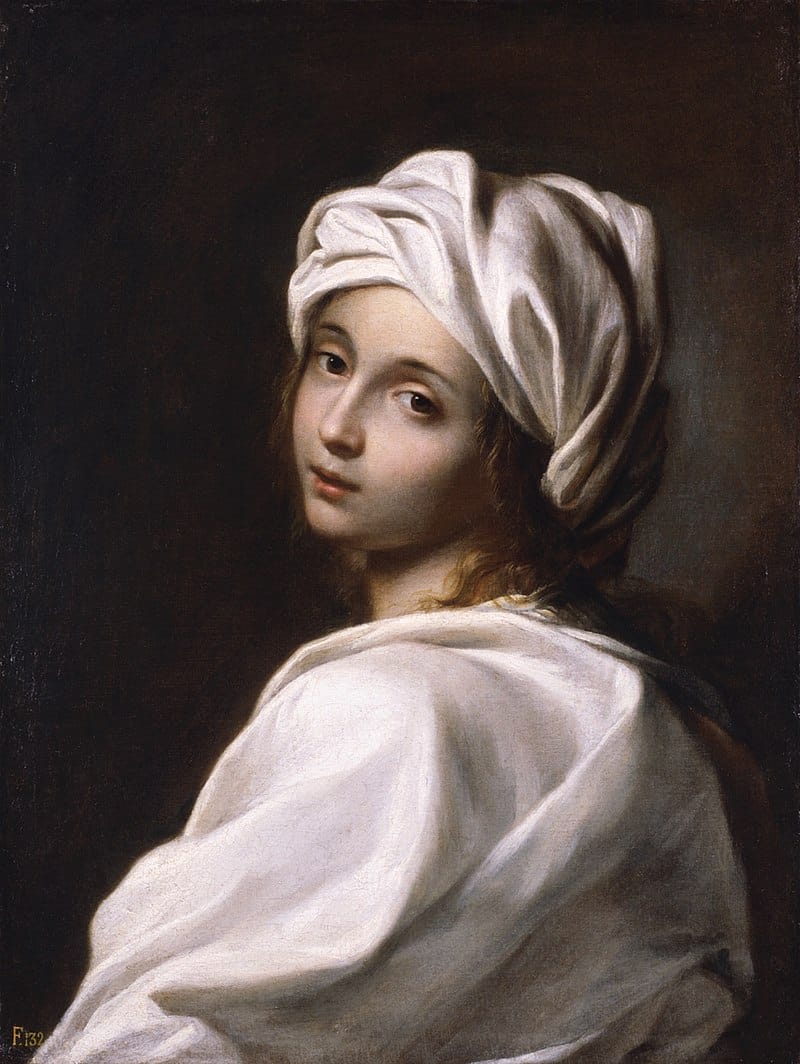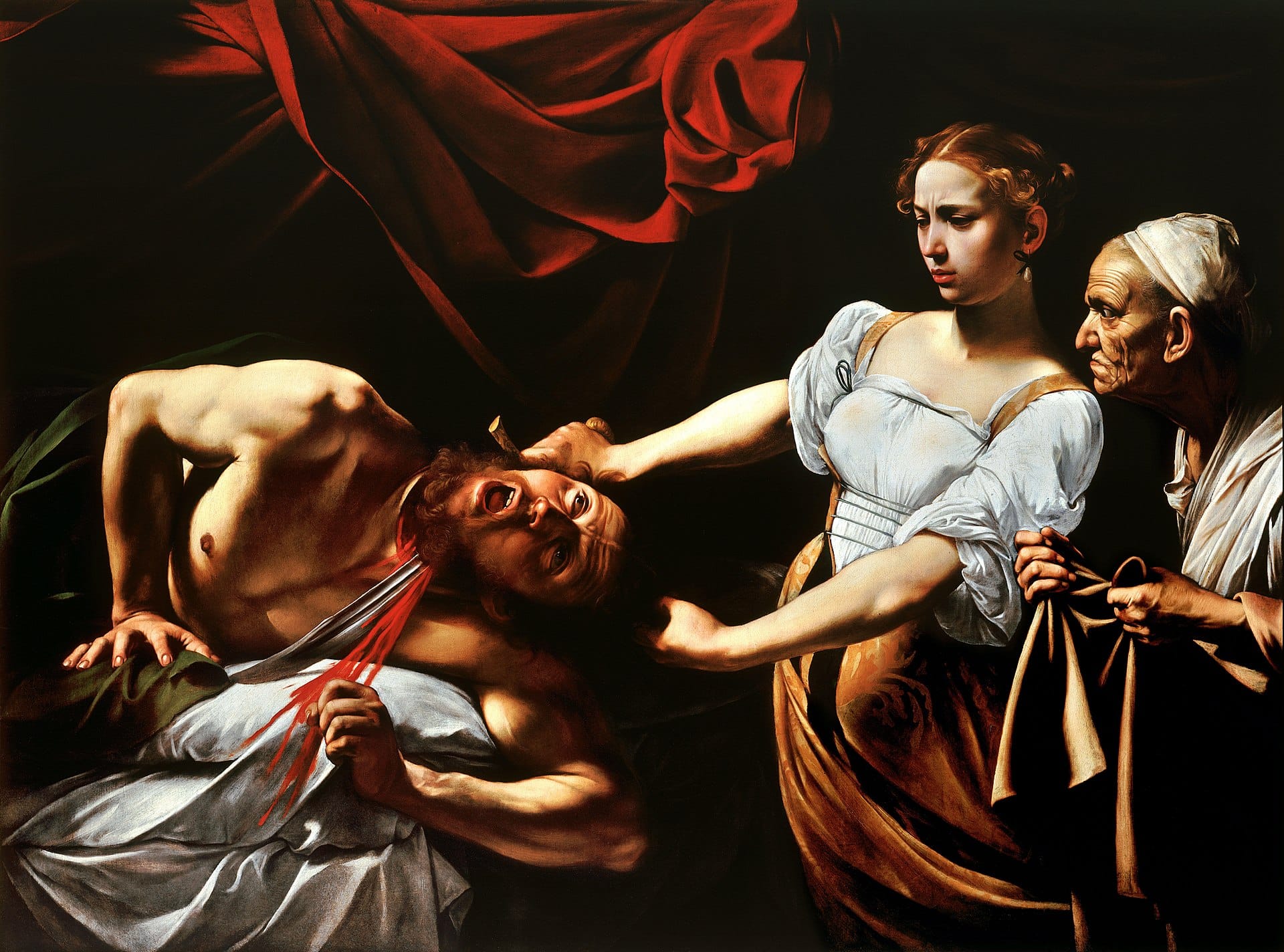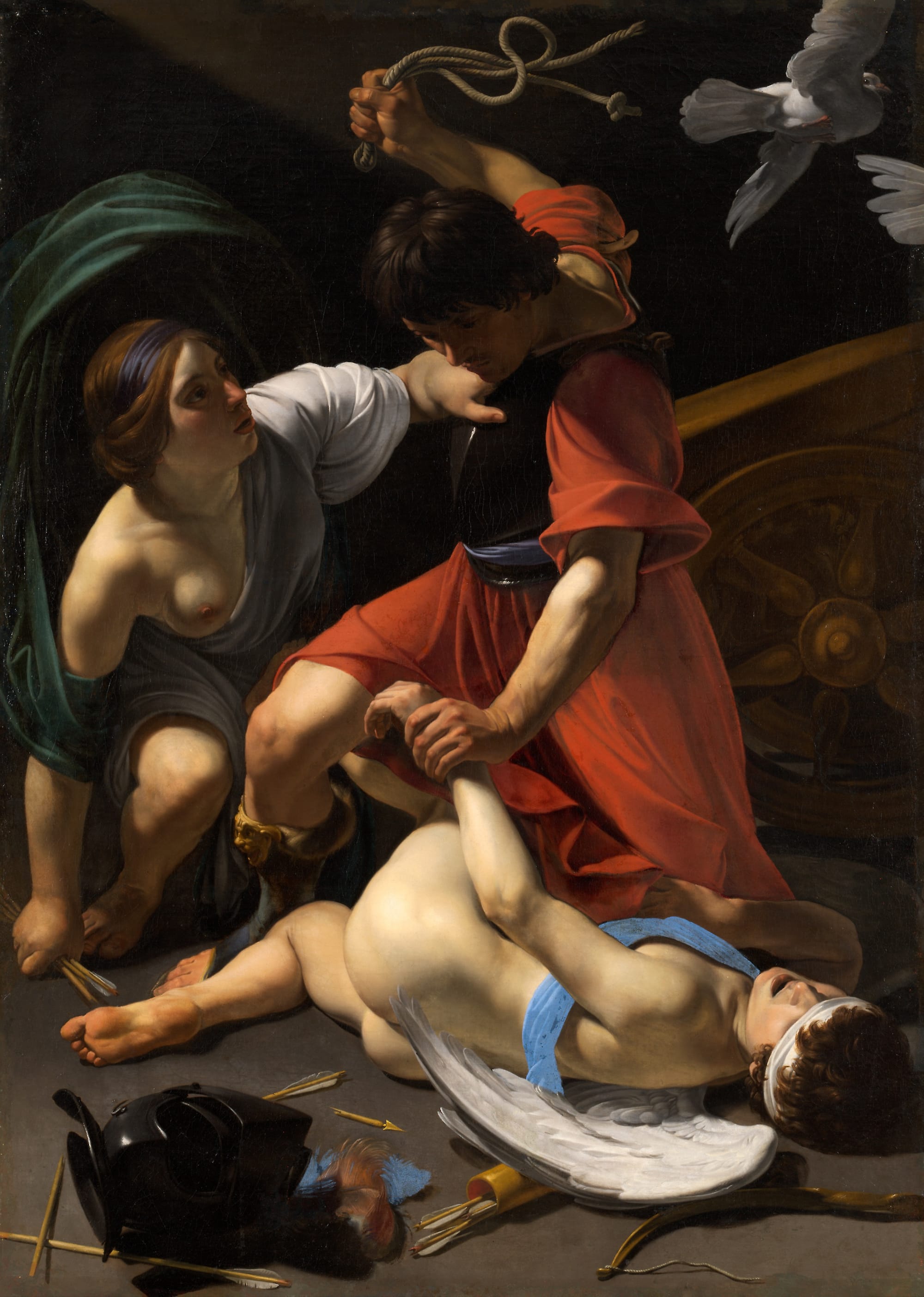Caravaggio's 'Judith Beheading Holofernes'

Caravaggio painted the infamous picture shown below in 1598. The following year a Roman noblewoman Beatrice Cenci (shown above) was executed publicly along with other family members for her part in the lurid murder of her father, who reportedly had raped her repeatedly. Was there a connection here? This painting got everyone's attention - it was much copied - and beheading was a common form of execution at the time. Was murder in the air?

At the time, most Romans (and poets ever since) sympathized with Beatrice Cenci against an abusive father. These became revenge paintings and poems. The English poet Shelley apparently saw the painting in Rome in 1818, which led to his verse drama about her (published in 1819). Alexandre Dumas, Stendhal, Nathaniel Hawthorne (The Marble Fawn) and Antonin Artaud all tried their hand at the story. They appear to have missed the personal tragedy; the story resonated for them because Beatrice Cerci represented the people, destroyed by an abusive and greedy aristocracy and they weren't wrong.
For other Caravaggios, see here and here. Such paintings provoked art critic John Ruskin to declare that Caravaggio and his followers (the Caravaggisti) fed "upon horror and ugliness and filthiness of sin." Indeed. It's how many feel about the violent painting below by one of Caravaggio's students, Bartolomeo Manfredi, which is sometimes titled Mars Chastising Cupid and which is open to multiple interpretations.

If Mars is chastising Cupid, it's because he is blaming Cupid for causing his own affair with Venus. The argument here is that this is about projection and "masculine shame." Mars feels humiliated in front of the other gods because falling in love is a weakness for the god of war. Notice the two doves leaving the frame.
This argument seems right to me for the early 1600's, but others have zeroed in on the homoerotic angle (Cupid's buttocks are prominent) and the possibility that Venus and Cupid had an affair. Neither of these is as persuasive for me, even though there is a degree of trolling the papacy going on in all these Caravaggisti paintings. On the other hand, a modern viewer might see it stripped from mythological context as simply a father beating a son.
